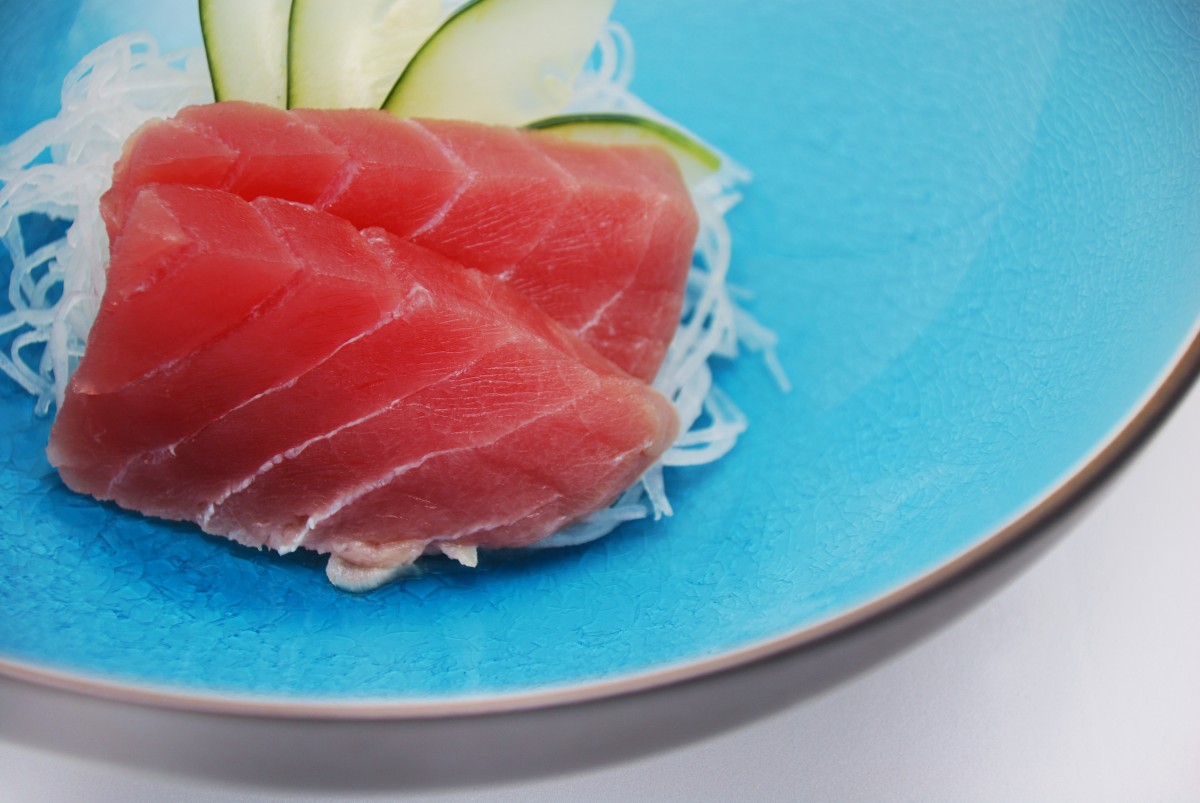
While some people work to solve the many sustainability issues: involving the creatures we harvest from the sea, others are radically exiting the binary altogether, by taking the “creature” and the “sea” out of the whole equation. Vegan alternatives to fish are light years behind those of meat, but a few entrepreneurs are starting to look at sustainable solution that is halfway between the two: Lab grown fish. This cruelty- free cell cultivation involves taking a small sample of tissue from a living fish, say a tuna, then allowing the cells to multiply—“grow”—in a vat, where they eventually diversify into exact copies of cuts that you’d see on a high-end sashimi platter. Industry disruptors claim we can expect to see this “fishless fish” in markets in a year or two. But this enthusiastic answer to our big problem gets more complicated the more you look at it. The Guardian takes a (pun intended!) deep dive:
“When grown indoors, cell-cultured seafood like salmon and tuna can be optimized for taste, texture and nutritional content, and cooked like traditional fish or eaten like sushi. But it remains unknown if consumers will embrace lab-grown fish.
‘We talk a lot about price, taste and convenience as the three core aspects the alt-protein industry needs to focus on,’ said Marika Azoff, a corporate engagement specialist at the Good Food Institute, a non-profit advocacy group that promotes alternative proteins. ‘They need to taste the same or better, they need to be priced the same or cheaper, and they need to be widely available.’
Even cell-cultivated skeptics agree that hi-tech seafood has a huge market potential, but they say it’s going to always be an expensive product even though costs are coming down with time. They also note that species such as salmon and tuna aren’t particularly threatened worldwide.”
Non-threatened nature of the species aside, I’d be very interested to try a piece of my fave (salmon) that’s been grown in a lab, just to see if I can detect a difference!
Representatives of some of the companies developing fishless fish do acknowledge their solution isn’t the only one. But the problems that plague the seafood industry—overfishing, warming oceans, mercury, microplastics, etc.—don’t have a single solution that covers everything. We’re going to have to think three-dimensionally to tackle this issue, and if part of it involves getting used to filet of sole fresh from a vat, then so be it.
Laser-wielding robots used to be the stuff of 1950s science fiction nightmares. But we’re now so deep into the 21st century that science fact is harnessing their pew-pew powers for good. Carbon Robotics, an agricultural robotics start-up based in Seattle, has recently sold out of this year’s model of their LaserWeeder—a smart farming machine with an onboard AI that identifies weeds as it’s towed over a field, then eliminates the weeds with a freaking laser. Potential to be cast as a Star Wars droid aside, the LaserWeeder is notable because one unit can cover two acres in one hour, zapping approximately 200,000 weeds. This speeds up one of the most onerous farming tasks, and helps mitigate the effects of farmhand staffing shortages.
eliminates the weeds with a freaking laser. Potential to be cast as a Star Wars droid aside, the LaserWeeder is notable because one unit can cover two acres in one hour, zapping approximately 200,000 weeds. This speeds up one of the most onerous farming tasks, and helps mitigate the effects of farmhand staffing shortages.
The LaserWeeder is itself an adaptation of the AutonomousWeeder—a contraption that does the above, but also drives itself across the field it’s weeding. (This is where I’d usually drop in something snarky about that ending well, but the AutonomousWeeder’s been doing its thing for over a year, with nary a sentience-achieving in sight.)
“‘We’ve proven the effectiveness of our laserweeding technology and the immense benefits it offers farmers, including healthier crops and soil, decreased herbicide use, and reduced chemical and labor costs,’ said Paul Mikesell, Carbon Robotics’ CEO and founder.
‘To best serve farmers’ needs, we’ve adapted the design of our product, but will still leverage our proven laserweeding technology,’ he continued. […]
While the cost isn’t listed on Carbon Robotics’ website, the company says that growers using the LaserWeeder are finding that it cuts their weeding costs by 80% and pays for itself in two to three years.”
The Laser- and AutonomousWeeders both seem to be solid entries in the robots-doing-things-humans-don’t-want-to category, much like a bomb disposal robot , or perhaps the robo-bussers at the Ameswell Hotel in Silicon Valley. I hope their labours, rather than forcing them to go rogue and kill all humans that oppress them, free up our collective brain-space to start reimagining industrial agriculture for our changing world. That would certainly make life better for all of us—robot and human!
I do enjoy a fluffy helping of rice, next to a spicy curry, or as the base for a silky risotto. And so does a healthy chunk of the world’s population! But this perfect carb has a dark side: The grains easily absorb environmental cadmium, a heavy metal that can accumulate in the human body and have a devastating effect on our health. Researchers have recently dived into the grain’s genome to search for a solution. With a bit of strategic genetic manipulation, a team from Okayama University has developed a strain of rice that absorbs less cadmium from contaminated soil and water—allowing for crops to be grown (and enjoyed!) while longer-term cleanup efforts get underway.
“Professor [Jian Feng] Ma and the members of his research team examined 132 accessions of rice and discovered that the gene OsNramp5, when duplicated in tandem, decreased the accumulation of cadmium in Pokkali, a type of rice cultivated for three thousand years in Kerala, India. OsNramp5 encodes a cadmium and manganese transporter protein in rice, according to earlier research. When the same gene is duplicated in tandem, it increases the absorption of both minerals into root cells. As a result, manganese and cadmium compete in the cells for translocation to the shoots, which in turn inhibits cadmium from building up in these regions. […]
As Pokkali stores extremely low cadmium in its shoots, the scientists introgressed (a term for the transfer of genetic information across species) the duplicated OsNramp5 gene in Koshihikari, a variety of rice that is very popular in Japan but accumulates relatively high levels of cadmium. Explaining how targeted breeding can help humans, Professor Ma says, ‘We identified a gene responsible for differential accumulation of cadmium in rice grain based on natural variations in cadmium accumulation. Then, we applied this gene to successfully breed rice cultivars with low cadmium accumulation in the grain.’”
Professor Ma makes it seem so easy—a simple solution for a simple grain. But the complex science shows how interconnected these varieties of rice are, both with each other and the Earth. I hope this creation buys us some time to get our cadmium-dumping act together. I’m glad we won’t have to starve while doing so!
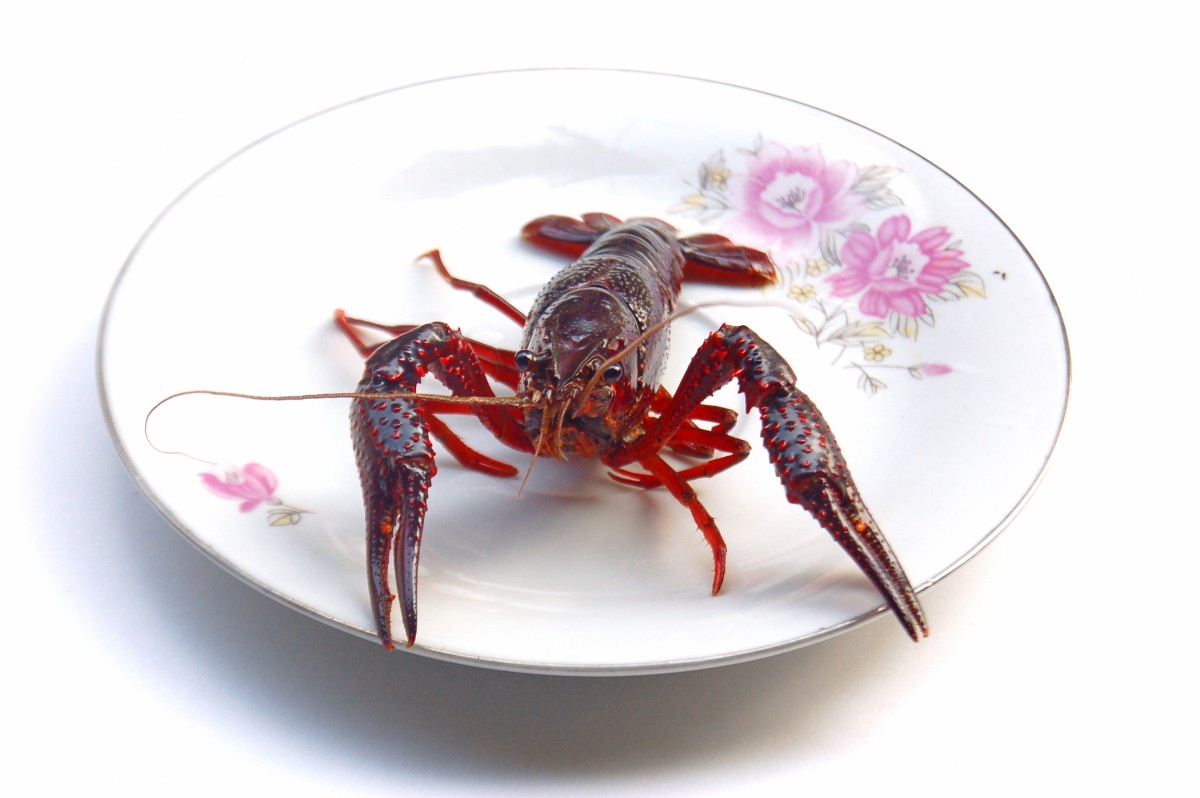
At the risk of turning into an all-seafood, all-the-time newsletter, we at DFC couldn’t let this oceanic innovation pass unremarked: Researchers have found a way to make batteries out of the discarded shells of crabs, shrimp, and lobsters. Like the shrimp shell cement (say that three times fast) we reported on this summer, this unusual use of crustacean cast-offs is a boon for sustainability on two levels. First, it finds a purpose for material that is usually just thrown away; and second, the batteries themselves are partially biodegradable (and the rest, recyclable). The science is fascinating and has just been published in the journal Matter, with Liangbing Hu of the University of Maryland’s Center for Materials Innovation as the lead author. And, once again, it all comes down to the wonder material that is chitin.
“Crustaceans such as crabs, shrimps and lobsters have exoskeletons made of cells that contain chitin, a kind of polysaccharide that makes their shells hard and resistant. […]
Through chemical processing and adding acetic acid aqueous solution, chitin can ultimately be synthesised into a firm gel membrane and used as an electrolyte for a battery. An electrolyte is the liquid, paste, or gel inside a battery that helps ions – charged molecules – travel between one end and the other of a battery, allowing it to store energy.
By combining this chitosan electrolyte with zinc, a naturally occurring metal increasingly used to make batteries that are cheap and safe, Hu’s team was able to create a renewable battery.”
These safer, greener batteries also retain an impressive 99.7% energy efficiency after about 400 hours of use. This means they have enough electrical oomph to actually be competitive with conventional batteries. The combo of zinc and chitosan is still being tested before larger-scale trials can begin, but researchers think this unusual pairing looks promising. I equally a) can’t wait to see these batteries in action, and b) what wacky use for shells science is coming down the pipe next!
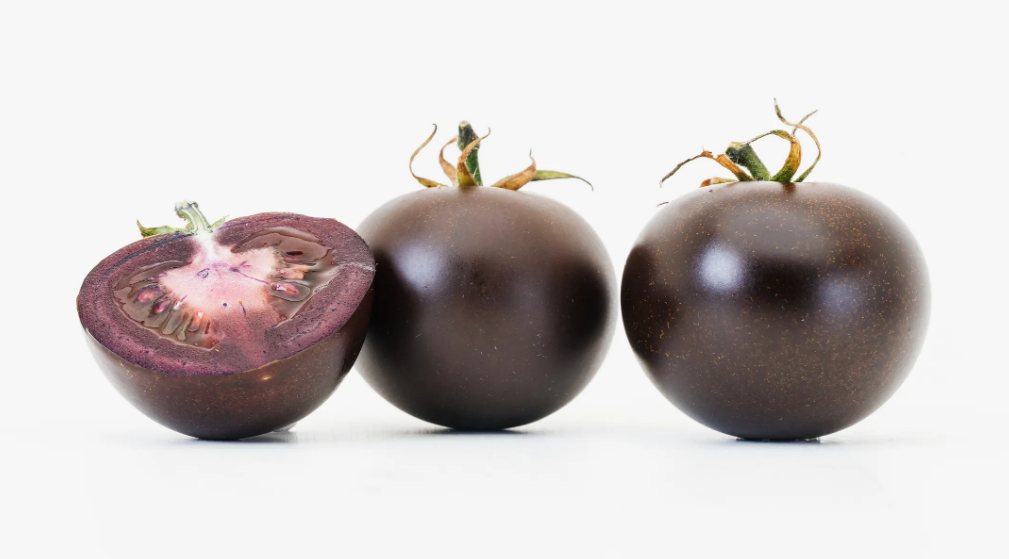
We’re coming up to the end of this year’s tomato season, and while it makes me sad, it also means we’re that much closer to next year’s tomato season! I’m hoping that will bring the debut of a new tomato that I just read about in Wired: a regally purple berry (yes, berry) that packs a major antioxidant punch.
The creators of this tomato genetically modified it with genes from a snapdragon, which boosts its colour and anthocyanin content — the same antioxidant found in blueberries and blackberries. Its gorgeous appearance marks a shift in GMO strategy: away from impressing farmers with yields and hardiness, and toward consumers trying to make healthier choices.
“Norfolk Plant Sciences, a company cofounded by [the purple tomato’s inventor, plant scientist Cathie] Martin, plans to roll out a purple cherry tomato in a handful of test markets in 2023. The biotech firm is also working on purple tomato juice, sun-dried tomatoes, and beefsteak tomatoes, and plans to sell seeds for backyard gardeners. ‘We hope people will eventually grow their own,’ says Martin. […]
While purple-skinned tomatoes have been developed through conventional breeding, they don’t accumulate high levels of anthocyanins in the flesh. There’s evidence from other researchers that these compounds may help prevent cancer, reduce inflammation, and protect against type 2 diabetes. And in a 2008 study, Martin and her team found that mice that were predisposed to developing cancer lived 30 percent longer on a diet supplemented with purple tomatoes than mice on a regular diet supplemented with normal red tomatoes. (Of course, animal studies don’t always translate to humans, and there are many lifestyle and genetic factors that may affect a person’s cancer risk.)”
The developers are hoping that the time of the “Frankentomato” has passed, and younger consumers who’ve seen the successful track record of GMOs in the food chain will be more willing to try a modified product, especially if health benefits are involved.
While the above-mentioned test markets will be in the U.S., I hope it goes well and Canada follows suit soon after. I’m intrigued by the flavour possibilities — tomato varieties can be so subtly different from one another. And what a spectacular Caprese salad or pizza sauce these jewel-toned beauties would make! I await the future of the tomato with glee — and will keep you updated.
Once upon a time, we had the luxury of never sparing a thought about our planet’s ability to support us. But things have been getting increasingly complicated as we uncover the unexpected fallout of our choices, making stewardship of our natural environment a tricky thing indeed.
The venerable Monterey Bay Aquarium has been doing some of this fancy footwork in the whale-saving department and taking an unexpected detour through seafood lovers’ plates. They’ve red-listed Atlantic lobster – that is, given it their lowest rating, “avoid,” in their Seafood Watch sustainability guide – in an effort to drive down demand for the crustacean. Commercial lobster fishing involves long vertical ropes, stretching from the trap on the sea floor to buoys on the surface, dotted throughout the migration route of the critically endangered North Atlantic right whale. The whales can get tangled in the fishing gear, which prevents them from swimming and feeding, and potentially causes their deaths.
demand for the crustacean. Commercial lobster fishing involves long vertical ropes, stretching from the trap on the sea floor to buoys on the surface, dotted throughout the migration route of the critically endangered North Atlantic right whale. The whales can get tangled in the fishing gear, which prevents them from swimming and feeding, and potentially causes their deaths.
“Other fisheries added to the red list include all fishing for Jonah crab, and other trap, pot, and gillnet fisheries. Gillnets are a wall of netting that hangs vertically in the water, while traps and pots also have vertical lines from the surface.
Oceana, a conservation pressure group, urged the US and Canadian governments to implement stronger measures to protect North Atlantic right whales. ‘It’s unfortunate that the government’s failure to update the safeguards to protect North Atlantic right whales is having such serious consequences on these [lobster] fisheries,’ said Gib Brogan, Oceana’s campaign director. […]
Strong fishing regulations were needed to avoid interactions and minimise the effects of interactions, he said. To give the species a fighting chance, the National Marine Fisheries Service (also known as NOAA Fisheries) should reduce the number of vertical lines and gillnets in the water and move to whale-safe fishing equipment, such as ropeless gear, Brogan said.
‘Ordering lobster or crab should not mean jeopardising the future of critically endangered North Atlantic right whales,’ he said.”
With fewer than 340 right whales in existence, it’s incredibly important to preserve as many individuals as possible. Doing so by informing lobster fans of the consequences of their favourite nosh is cleverly effective. Love of the delicacy may even drive the reforms right whales need if lobster enthusiasts band together. I’d be happy to sacrifice a few celebratory meals if it means taking responsibility for ourselves and caring for these gentle giants of the seas.

Now that it’s September, I’m resigned to the fact that fall is around the corner. One small silver lining is that the more the weather cools, the more comfort food we can enjoy – including chocolate! But there are some innovations happening in the confection sphere that will make chocolate even more enjoyable; not just for our tastebuds, but for our consciences too.
Several startups are working on “non-cocoa chocolate;” that it, lab grown sweets sourced from cell cultures, that are indistinguishable from the real thing in taste and texture. By decoupling the existence of chocolate from the cocoa bean, these companies hope to make tasty treats that are more resilient in the face of climate change and don’t also represent deforestation and child labour. But the situation is complicated, and also needs to take into account the economic impacts of small-scale farmers who supply many of the world’s cocoa beans.
“‘People have an emotional connection to chocolate that they don’t have to cornflakes,’ says Clay Gordon, author of Discover Chocolate: The Ultimate Guide to Buying, Tasting, and Enjoying Fine Chocolate, and a renowned cocoa industry observer and consultant. […]
Cocoa is especially vulnerable because it is predominantly grown by smallholder farmers. He says these farmers have no collective bargaining leverage and fair trade isn’t working to force major global companies to pay fair prices.
Gordon sees a market for lab-grown chocolate similar to the growing market for substitute plant-based meat products. It is not competitive in the short term and hence will not have an immediate impact on the cocoa industry which many in west Africa depend on. However, in the event of an unprecedented global climate event or ‘potential disruptors,’ the rise in the use of lab-grown chocolate and other food products could be impactful.”
It seems there are lots of factors these days that are causing this manufacturing pivot. It makes sense that developers are trying to get ahead of any one of these potential market enders. I know I’d be a lot happier with a treat that made the world happier too; from the farmers to the harvesters, to the general environment. If that chocolatey goodness flows from a place of responsibility and kindness, it’ll taste all the sweeter.
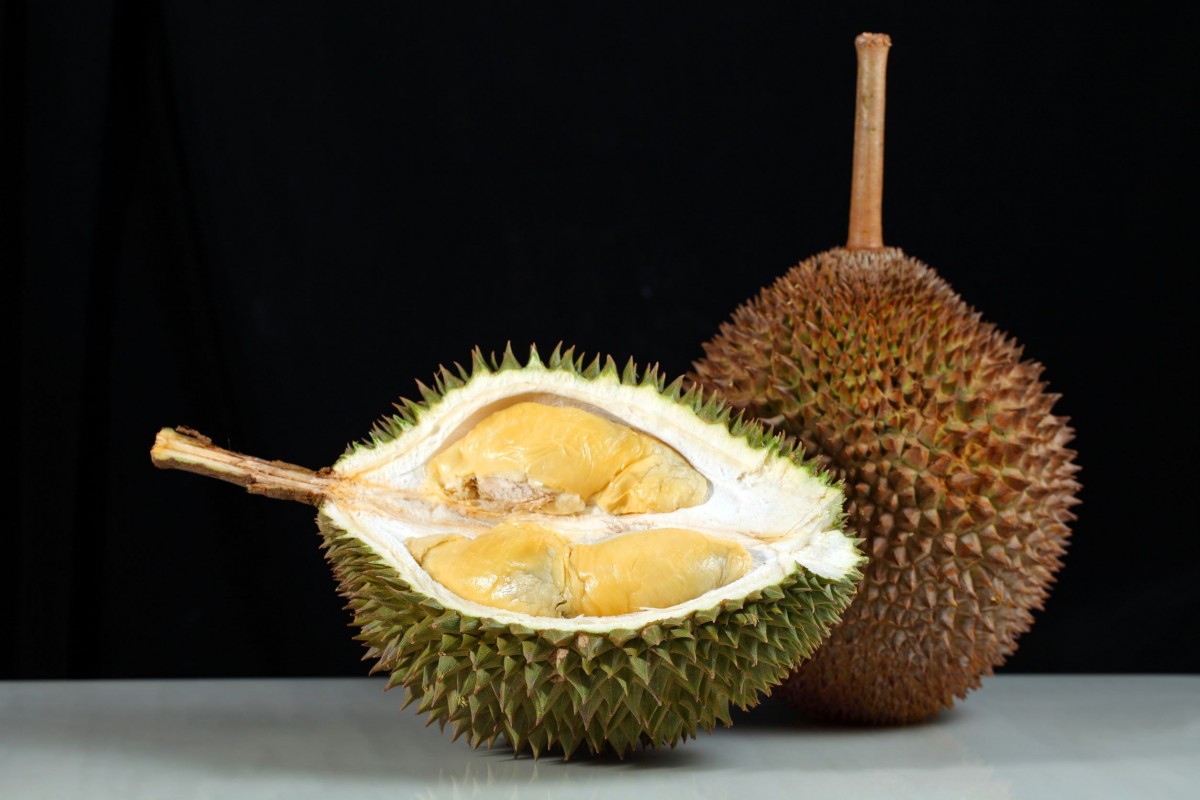
If you’ve heard anything about durian – a large, spiky-shelled, creamy-fleshed fruit with a delicately complex flavour – I bet it’s the fact that it’s banned on public transit in Singapore. That’s because of its overpoweringly noxious scent, variously described as garlicky, like “used socks,” and even “raw sewage”. Notoriously rule-heavy Singapore isn’t alone; many Southeast Asian locales have banned consuming or even transporting the fruit in public places, out of concern for the common good.
But great news has just arrived for durian fans who can’t keep their love to themselves. A fruit tree researcher in Thailand has engineered a durian subspecies, whose fruit retains all the joy for the tongue, without the wallop to the nasal cavity.
“This new type of durian is believed to be a branch of the popular Mon Thong variety grown in the province of Nakhon Ratchasima, northeast Thailand. Growers claim that the new durian variety is sweet, tender, and has no peculiar smell.
Currently, this odorless durian variety has been granted a trademark and geographical indication (GI) certificate by Thailand’s National Office of Intellectual Property, recognizing that the product originates from a specific geographical location and has prestigious quality credited to the region. […]
At present, the fruit is banned from most hotels, airlines and public transport in many Asian cities, such as Singapore. […]
In 2019, a durian was dumped near an air vent at an Australian university, prompting students and staff to evacuate the campus and call rescue teams to locate the source.”
Without its characteristic odour, will the acknowledged “king of fruit” lose any of its awesome grandeur? I doubt it – as we at DFC know, making your flavours more accessible means more popularity. I might even be inclined to try one of these scentless durians at home; I bet breaking it down would be a fun activity, much like one of my all-time faves, pomelo. And when I do, I’ll raise a slice in solidarity to those durian fans who can finally chow down on the train in peace!
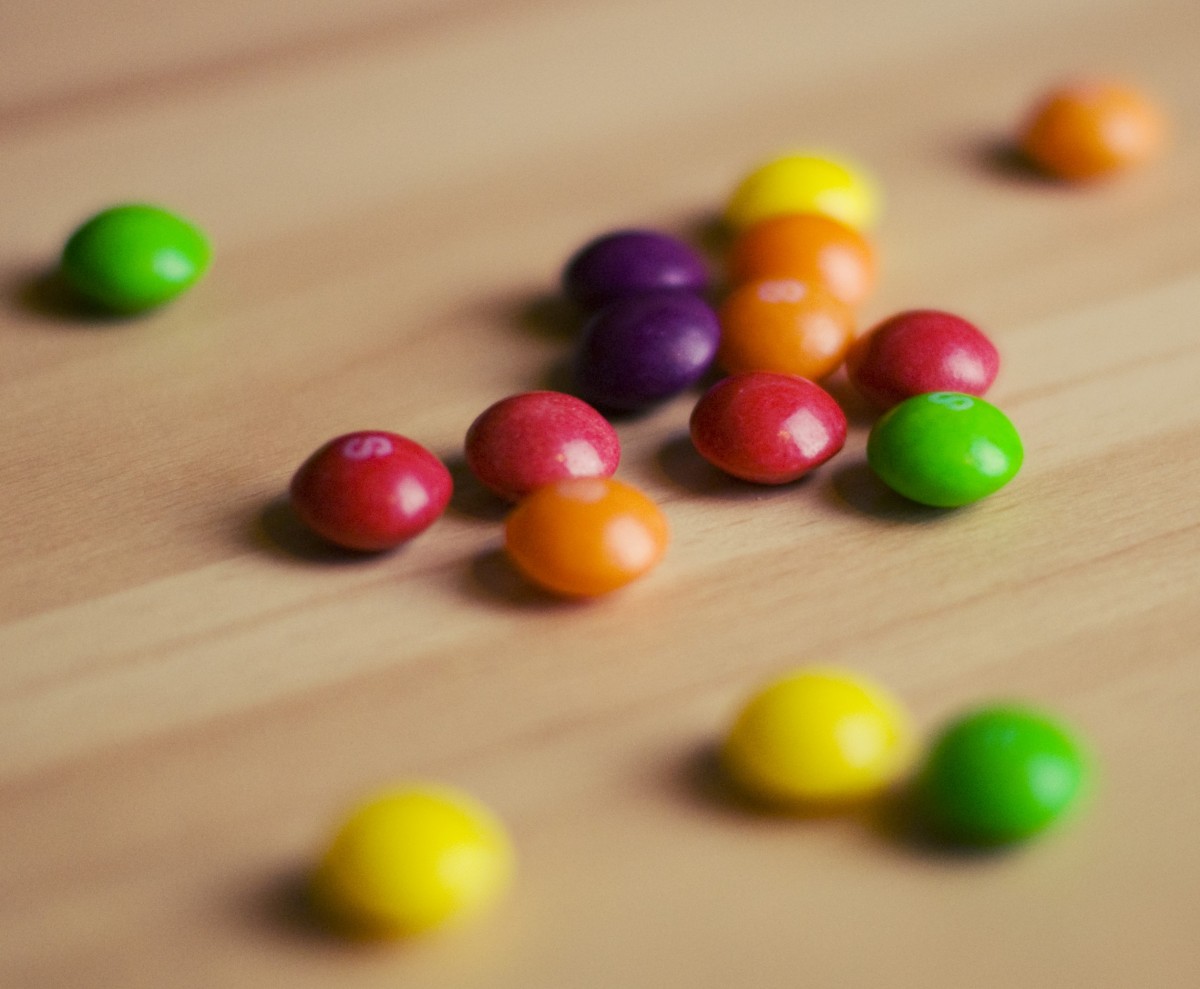
It seems American sweets can’t catch a break. First, it was sprinkles, banned by regulatory bodies in the UK as a non-legal source of the red dye E127. Now, a home-grown lawsuit is coming after the quite possibly cheerfullest candy the good old U.S. of A. has ever produced, Skittles. California resident Jenile Thames is suing the Mars Corporation over what the suit alleges are “heightened levels” of titanium dioxide in Skittles that are “not safe and pose a significant health risk to unsuspecting consumers.” Titanium dioxide is used extensively as an anti-caking and whitening agent in the paint, paper, plastic, cosmetic, and (in the U.S. at least) food industries. It’s been banned as a food additive in Europe, but it’s still used in American-made Skittles to make their rainbow colours really pop.
“‘Based on Defendant’s omissions, a reasonable consumer would expect that the Product can be safely purchased and consumed as marketed and sold,’ the complaint reads. ‘However, the Products are not safe and pose a significant health risk to unsuspecting consumers. Yet, neither before nor at the time of purchase does Defendant notify consumers like (Thames) that the Products are unsafe to consumers, contain heightened levels of titanium dioxide, and should otherwise be approached with caution.’
In 2021, the European Food Safety Authority (EFSA) halted the use of titanium dioxide when it announced that the substance ‘can no longer be considered safe as a food additive.’ And years before the EFSA made that announcement, Mars shared its plans to gradually remove titanium dioxide from its products. Although Mars’ plans were revealed in 2016, the company has yet to remove titanium dioxide from Skittles and other products.”
Mars has fired right back in a statement, saying that the titanium dioxide levels in Skittles remain below the FDA “danger” threshold – essentially passing the hot potato to the FDA. I have no idea how this suit is going to resolve, but I wonder if it might force a European-style pivot on the American FDA? Until then, I thank my stars it’s been years since I’ve tasted a Skittle. Apparently, I need all the power my system’s got to process those sprinkles…
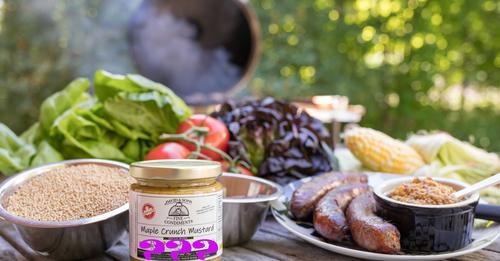
We’ve definitely been feeling the (40 degree?!) burn recently, but DFC has had the heat turned on another way: climate-change-related drought out west has led to shortage of our much-needed mustard seeds! Thankfully, the breadth of our product line means we can roll with a certain amount of scarcity, but that’s not the case with mustard-only outfits. Quartz looks at the particular case of France, the world’s biggest consumer market for mustard, and how companies there are struggling to meet demand with so little supply.
“At least 80% of the brown seeds come from Canada, Luc Vandermaesen, director of the Reine de Dijon mustard manufacturer and president of the Burgundy Mustard Association, told the New York Times. A heat wave across Alberta and Saskatchewan cut seed production by 50% last year. Even the smaller Burgundy harvest was hit hard by rising temperatures.
The shortage of seeds is already pushing up retail prices for Dijon mustard – which is used as a spread for sandwiches, a condiment for steak frites, and a crucial base for many classic French sauces – as much as 25%, Vandermaesen said. Some stores, when they have mustard in stock at all, limit customers to one jar per person. French chefs have resorted to appealing online for any spare mustard, and shoppers have come to the manufacturer’s headquarters – which does not sell the product itself – looking for the condiment.”
All of these strategies are stopgaps – purchasing limits, online appeals, even our pivoting to other sauce production. The reality of climate change means that we either have to fundamentally alter how we run our companies, or how we live on this planet. And we are rapidly running out of time to do the latter. I know we’re in the mustard business, so this may sound like heresy, but our planet is worth more than a jar of mustard – or a herd of dairy cattle, or a super yacht. But it looks like we humans can’t know the value of something until it disappears… Especially if it’s as small as a mustard seed.